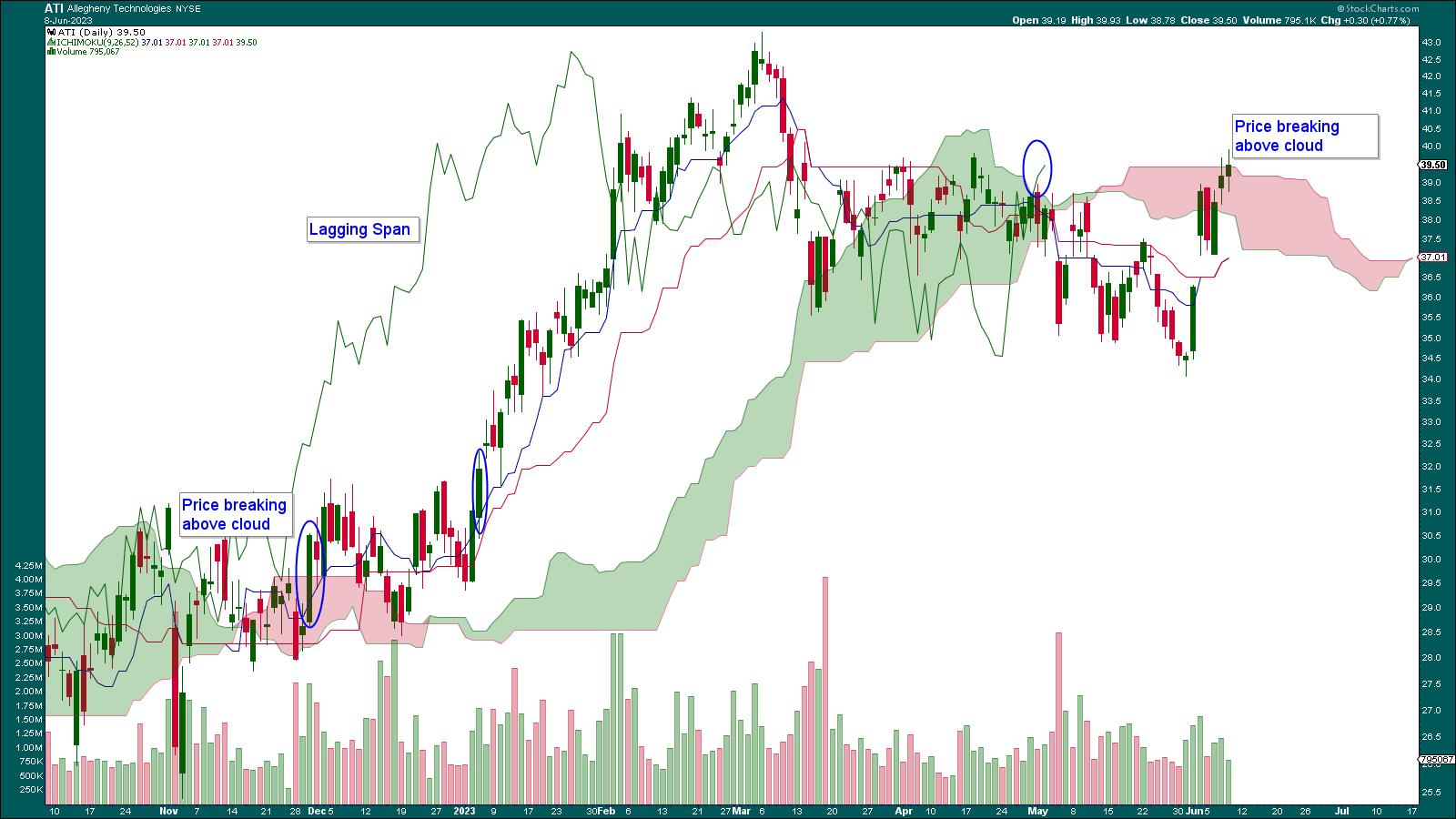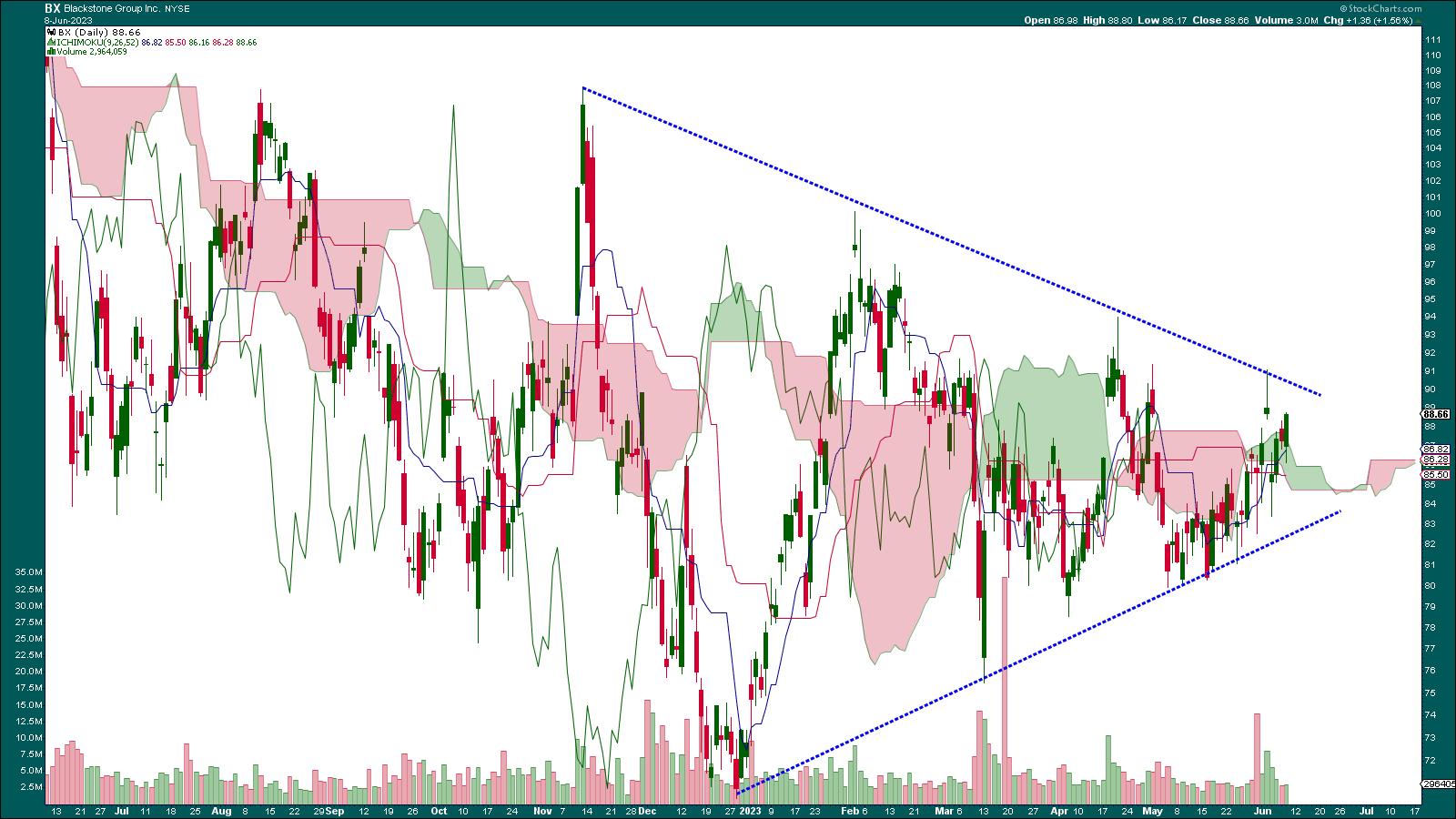
Note: For the sake of brevity, this article will take a bullish and long-only approach. If you're interested in going short, you can apply this information, but in reverse.
How can you efficiently use the Ichimoku Kinko Hyo (aka Ichimoku Cloud) indicator to find trading opportunities, especially when it has so many moving parts with bullish and bearish combinations?
As described in ChartSchool, the Ichimoku Cloud is a comprehensive indicator designed to produce clear signals. Comprehensive and clear, but also complex in many cases, and everyone who uses these indicators has their preferred way of combining the components.
One approach, which can help simplify the process and make it more efficient, would be to use the Chikou Span (aka Lagging Span) to assess current price action and future price targets. In short, you'd look 26 periods back to speculate what might happen between now and 26 periods into the future. Yes, that sounds strange, but if you give it a chance, it's actually quite useful.
Not familiar with the Ichimoku Cloud and the different bullish and bearish indications derived from its five components? You can review it here.
One bullish signal is that of price moving above the cloud. StockCharts has a scan for this pattern event. Because it tends to produce lots of results, it's best to modify it by raising the daily volume (included in the code below).
How to Do a Price-Moving-Above-Cloud Scan
To scan for this pattern event, do the following:
Go to Member Tools > Advanced Scan Workbench > New
Copy and paste the following code:
[type = stock]
AND [country is US]
AND [[exchange is NYSE] OR [exchange is NASDAQ]]
AND [market cap > 100]
AND [Daily SMA(20,Daily Volume) > 500000]
AND [Daily Above Ichimoku Cloud is true]
AND [yesterday's Daily Above Ichimoku Cloud is false]
Click the Run Scan button.
The scan produced many results. One of the candidates was Allegheny Technologies (ATI).

CHART 1: ALLEGHENY TECHNOLOGIES BREAKS ABOVE ICHIMOKU CLOUD. Could this stock be a candidate for a future trade?Chart source: StockCharts.com (click chart for live version). For illustrative purposes only.
Price has moved above the cloud—what the scan picked up. When price moves above the cloud, it's a signal to monitor for future opportunities. If you go back to December 2022, the blue arrow shows a time when price broke above the cloud.
Here's what you need to look out for. The Lagging Span (the green line) plays an important role. When it's above the conversion line, base line, price, and the cloud (all Ichimoku lingo), it indicates the likelihood of a stronger degree of buying pressure supporting the trend. The Lagging Span will be 26 periods behind the current price.
So, in the chart above, the buy signal came later when price broke above the conversion line (second blue oval). If you had entered a trade at that time, you would have made a good return, as long as you exited the trade at around the time when the conversion line crossed below the base line and the Lagging Span turned lower.
Looking at the current price on the chart of ATI, the Lagging Span is moving higher above the cloud, but the cloud has turned red. A lot will depend on how much upward momentum the price has, as it's within the now-bearish cloud.
Let's take a look at another scan result, the stock of a company you may be familiar with—Blackstone Group (BX).

CHART 2: BLACKSTONE GROUP'S SIX-MONTH SYMMETRICAL TRIANGLE. This is a stock to patiently watch.Chart source: StockCharts.com (click chart for live version). For illustrative purposes only.
Notice the extremely lengthy symmetrical triangle formation that's been playing out over the last six months. The response to this Ichimoku scan would be iffy and one to patiently watch. Why?
Because of the following reasons:
- The stock is consolidating and not trending.
- The lagging span isn't in a position that's signaling (let alone confirming) a bullish development.
- The triangle is setting up for a breakout.
The Ichimoku Cloud (26 periods ahead) and the lagging span (26 periods behind) may provide you with early trading or confirmation signals once the breakout occurs.
The Bottom Line
The Ichimoku Kinko Hyo indicator, or Ichimoku Cloud, is a comprehensive tool that can yield fruitful trading opportunities, but must be used correctly. Although the cloud's many moving parts may initially seem daunting, its components can be harnessed to efficiently evaluate current and future price action. This article presented an analysis of a bullish signal—price moving above the cloud—and illustrated how scanning for such stocks can help you cut through the noise of this complex indicator.
However, the scan's results highlight potential opportunities for closer monitoring, rather than providing immediate trading signals. The Lagging Span plays a critical role here; when all its conditions are met, it indicates strong buying pressure supporting the trend. However, remember that vigilance and patience remain key virtues, especially when the signals indicate a need to wait, as demonstrated in the Blackstone Group example. The ideal outcome always relies on tool efficiency, insightful analysis, and strategic timing.

Disclaimer: This blog is for educational purposes only and should not be construed as financial advice. The ideas and strategies should never be used without first assessing your own personal and financial situation, or without consulting a financial professional.
Happy charting!






